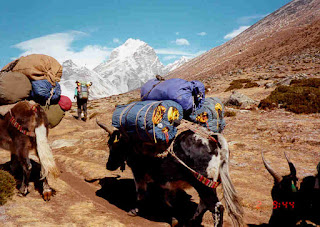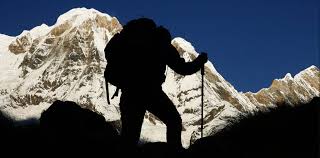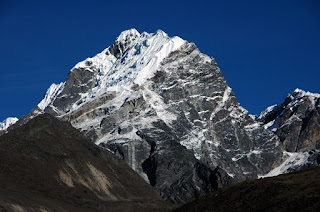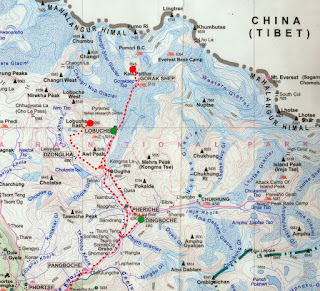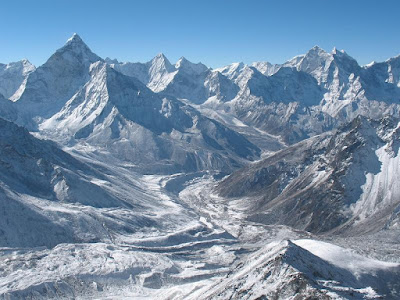Let's start with an article that I have been watching make the rounds for the past few weeks on 'How to Train for Mt. Rainier In Just 3 Months'. While this may technically possible it takes a LOT longer than three months to properly prepare to climb a mountain like Rainier. It takes even longer to prepare to climb something bigger.
| The Camp Muir Slog at 9,700 ft |
I get concerned every time I see articles like these that the author is leaving out key details, setting up the reader for disappointment, or, worse yet, creating a future safety situation on the Mountain. This is not cool. I will spend some time later on the social contract aspect of mountaineering. For now though, let's have a real discussion about the hard realities of physical training.
Mountaineering training is a lifestyle. This lifestyle requires a great deal of time, a tremendous amount of social sacrifice, a constant focus and expansion of your physical limits, and a commitment to train in all conditions. My friends have gotten used to me not committing to anything during training season on the weekends prior to Thursday. I am available only if NOAA and Atmos dictate that the Mountain is not accepting visitors. There are very few days off. The rewards though - they are so worth it.
I am committed to training six days a week with a mandatory rest day on the seventh. My personal schedule looks something like this with a mix between full body strength, leg specific, yoga, cardiovascular training, and activity specific training with a loaded pack. This is a basic outline with the amount of weight, hike distance, and pack weight increasing over time.
Monday: Full Body Strength
Tuesday: Legs Heavy Cardio (Ex. HiiT Cardio, Jumpboard, Skiing, etc)
Wednesday: Full Body Strength
Thursday: Yoga
Friday: Cardio (Ex. Kickboxing, HiiT Cardio, etc)
Saturday: Activity Specific Training with a Weighted Pack (Ex. Hiking, Backpacking, Stairs, etc)
Sunday: Rest
This mix works well for me. This formula includes enough variety to maintain muscle confusion and at least two days a week to focus on cardio. I cannot overemphasize enough the importance of cardio. This is a newer focus in the past two years and my performance at altitude has improved dramatically in the thinner air. Your legs and core strength are key but everything falls apart if you are gasping for breathe.
Does this get boring? Oh yeah it does. Are there some days when the idea of going to the gym, of going anywhere, is the absolute last thing I want to do? Damn right. There are plenty of days when all I really want is to stay home, turn on the TV, and sit on the couch with a beer. I get tired of the endless smelly workout clothes laundry and the reality of the consistently aching muscles. (something always hurts - always)
I can assure you though that this lifestyle and a consistent commitment to fitness will keep you mountain ready. The confidence that comes in knowing that my legs, lungs, and heart are ready for anything at a moments notice is a freedom that I would not trade. It is worth every once of sweat, every aching muscle, and every weekend brunch I've missed. The mountains are always calling and I always want to be ready to go.
Please also see these amazing resources on other training approaches. I hope that you find, or have already found, the formula that keeps you trail ready. See you out there. We will share a beer at the summit. I'd also love to hear what works for you.
FitClimb - Rainier Training: http://www.fitclimb.com/page/mount-rainier-training-plan
Alpine Ascents - Rainier Training: https://www.alpineascents.com/pdf/info/rainier-muir-train.pdf




